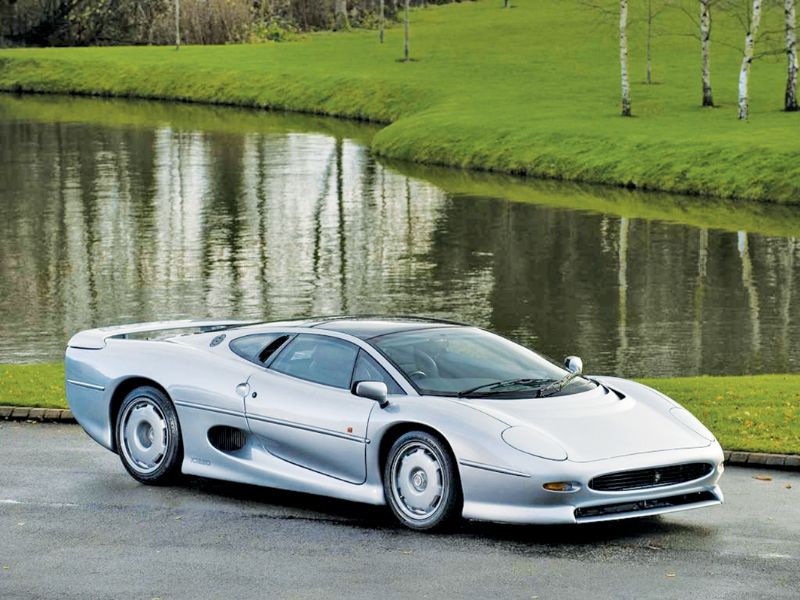- Home
- News, Articles & Reviews
We are hiring! Please click here to join our growing magazine delivery team in Gloucestershire!

The Saturday Club
Author: Luke Edwards, Posted: Thursday, 23rd August 2018, 09:00
Unveiled by Sir John Egan 30 years ago at the 1988 British International Motor Show, the world first saw a radical concept car from Jaguar. The Jaguar XJ220 became the poster supercar of the early 1990s – I know as it was on my bedroom wall!
The concept XJ220, powered by a V12-engine, had four-wheel drive and was designed by ‘The Saturday Club’; a group of 12 specialist engineers and designers who worked in their spare time with the help of about forty of Jaguar’s suppliers. The shape of the car was designed by Keith Helfet, the South African born Royal College of Art graduate who had become Jaguar’s Senior Sports Car Designer, and later designed the XK180 and F-Type concepts.
A very positive reception
The XJ220 had a very positive reception and it prompted Jaguar Sport to put the car into production; in collaboration with the specialist automotive and race engineering company Tom Walkinshaw Racing (TWR). Approximately 1,500 deposits of £50,000 each were taken, with many from famous celebrities, and deliveries were planned for 1992. The cars were to be produced at a facility in Bloxham, Oxfordshire, which later became the Aston Martin DB7 factory.
However, the XJ220 was never really intended to be a production car – merely a demonstration of the company’s abilities – and further engineering requirements resulted in significant changes to the specification of the car. Most notably the replacement of the Jaguar V12 engine by a turbocharged TWR V6 engine and rear wheel drive rather than all-wheel drive. For many people, who had put down a deposit and also for the motoring press, the reduction in engine size by half, the move from naturally aspirated to turbo charged, and the amendment in drive changed the Jaguar XJ220 completely.
One of the most expensive cars at that time
The change to the specification and a collapse in the price of collectible cars brought about by the early 1990s recession resulted in many buyers choosing not to exercise their purchase options. A total of just 281 cars were produced by the time production ended, each with a retail price of £470,000 in 1992, making it one of the most expensive cars at that time. However, in a turn of fate, with only 275 cars ever being produced, it has made the XJ220 even rarer and more collectable.
The XJ220 recorded a top speed of 212.3mph (341.7km/h) during testing by Jaguar at the Nardo test track in Italy. This made it the fastest production car from 1992 to 1993. According to Jaguar, an XJ220 prototype managed a Nürburgring lap time of 7:46:36 in 1991, which was faster than any production car lap time before it.
The XJ220 prototype with its original V12 engine can be seen in the Jaguar Heritage Trust building at the British Motor Museum at Gaydon. I visited the museum last month and can highly recommend it; they also currently have the excellent Car S.O.S exhibition taking place with many cars restored on the show on display.Other Images
Copyright © 2025 The Local Answer Limited.
Unauthorized use and/or duplication of this material without express and written permission from this site's author and/or owner is strictly prohibited. Excerpts and links may be used, provided that full and clear credit is given to The Local Answer Limited and thelocalanswer.co.uk with appropriate and specific direction to the original content.More articles you may be interested in...


© 2025 The Local Answer Limited - Registered in England and Wales - Company No. 06929408
Unit H, Churchill Industrial Estate, Churchill Road, Leckhampton, Cheltenham, GL53 7EG - VAT Registration No. 975613000You are leaving the TLA website...
You are now leaving the TLA website and are going to a website that is not operated by us. The Local Answer are not responsible for the content or availability of linked sites, and cannot accept liability if the linked site has been compromised and contains unsuitable images or other content. If you wish to proceed, please click the "Continue" button below:




